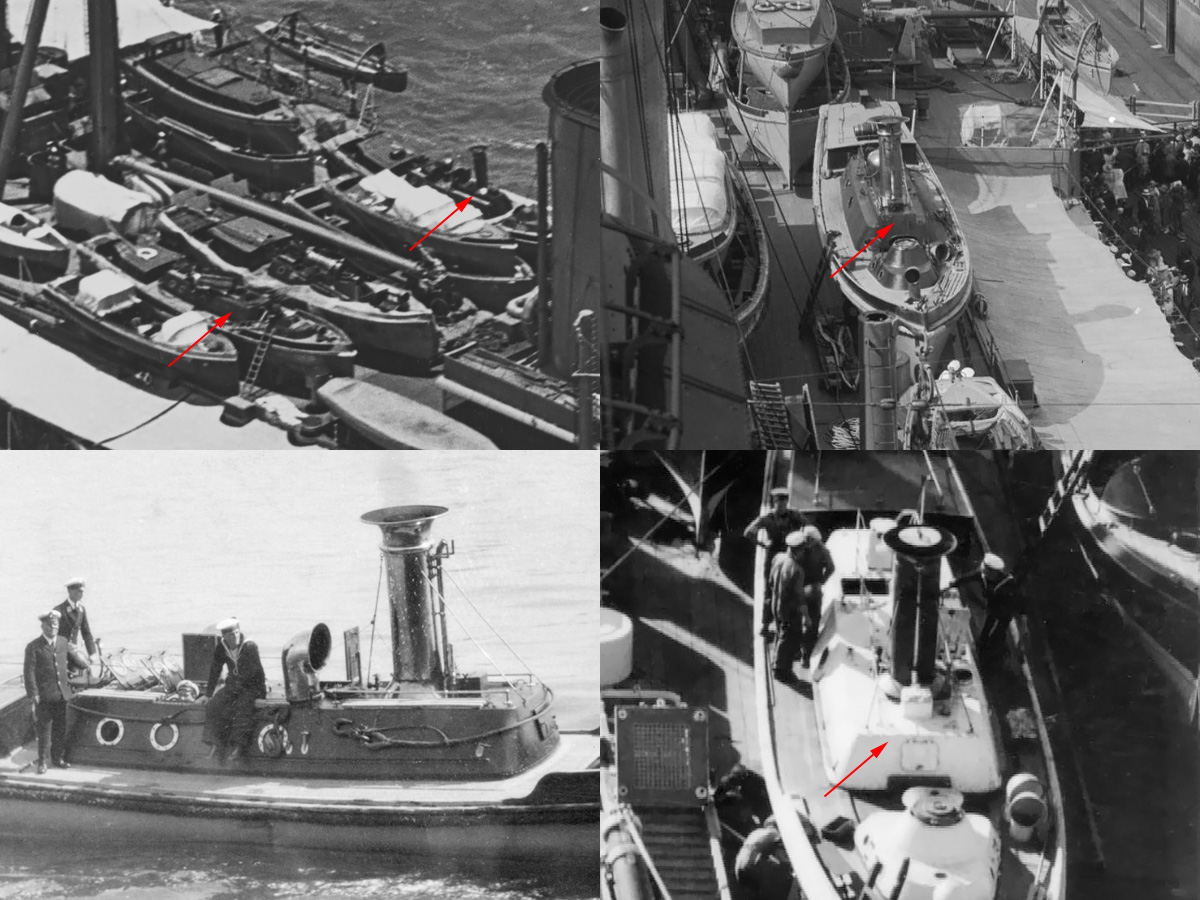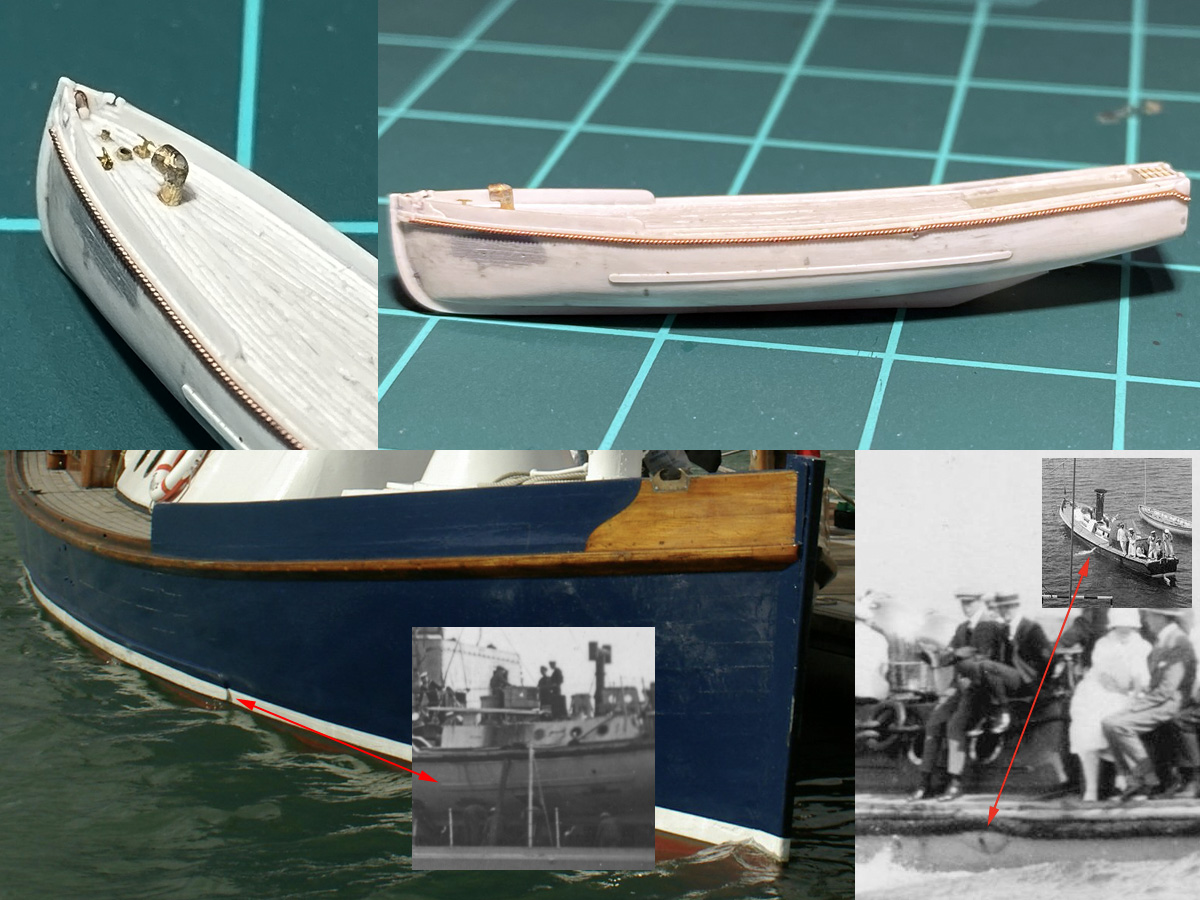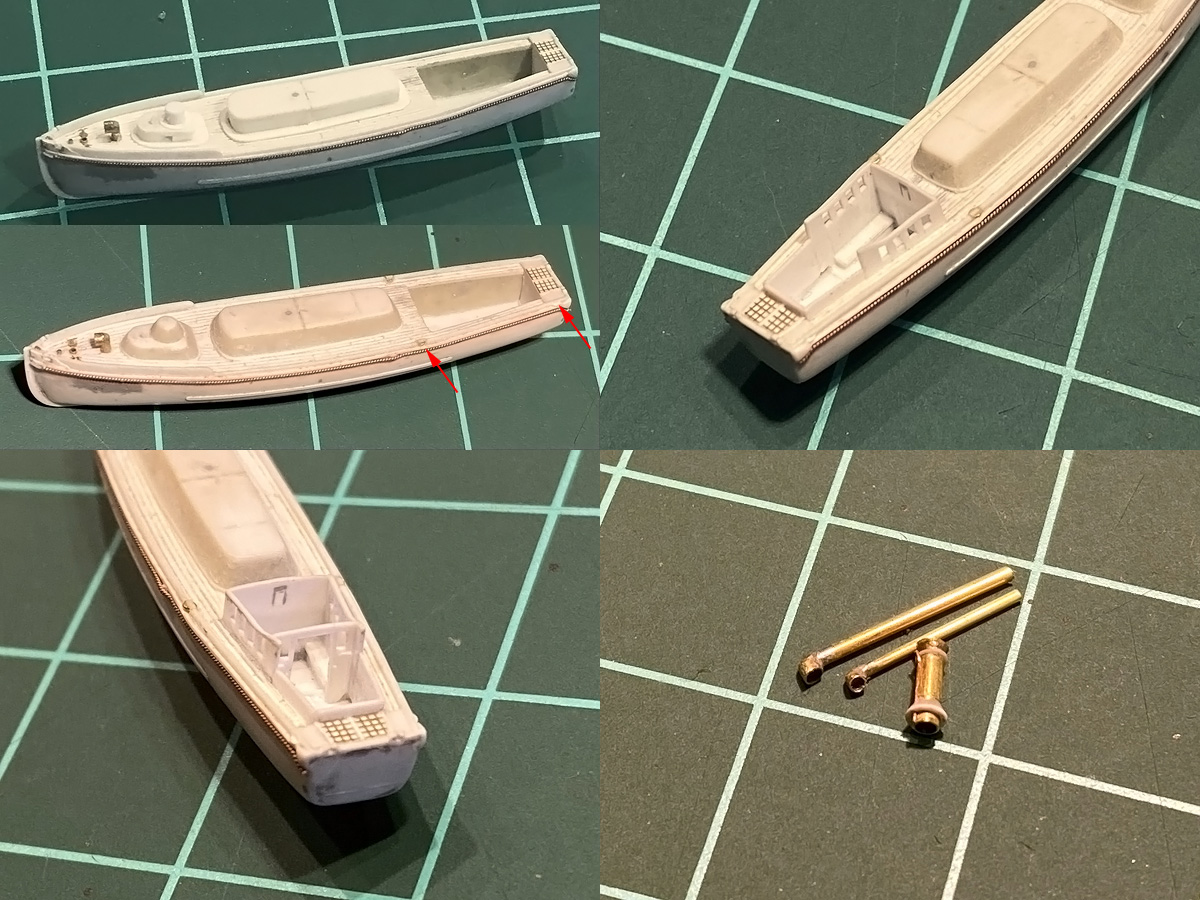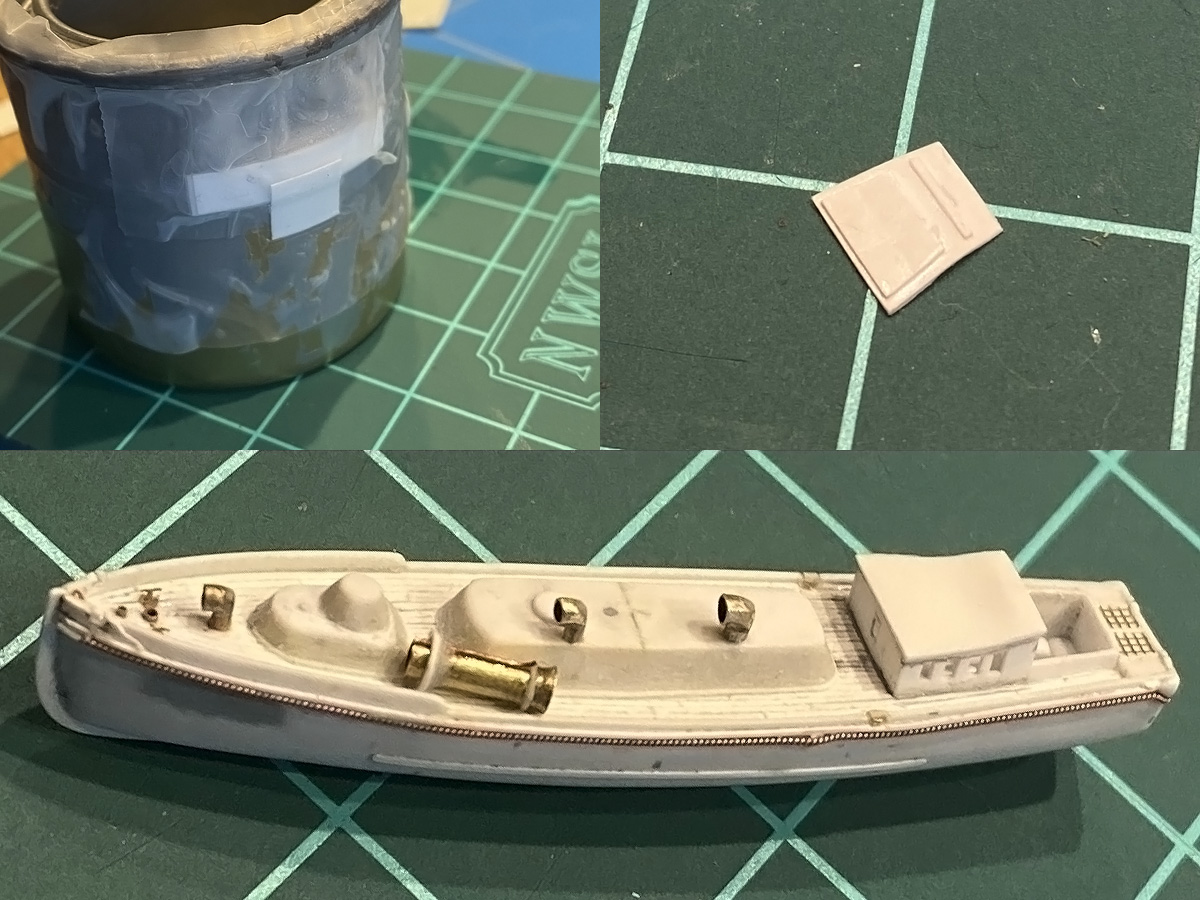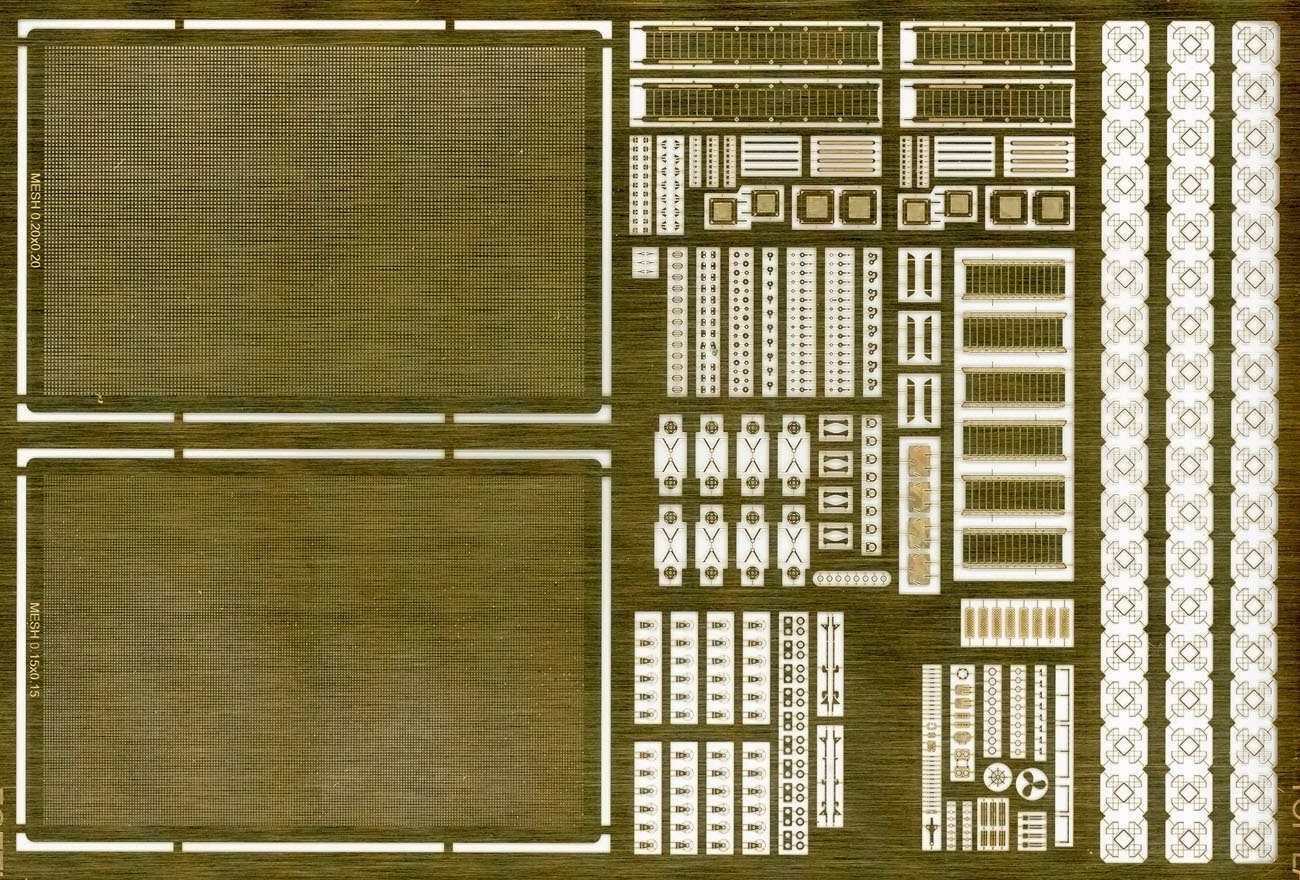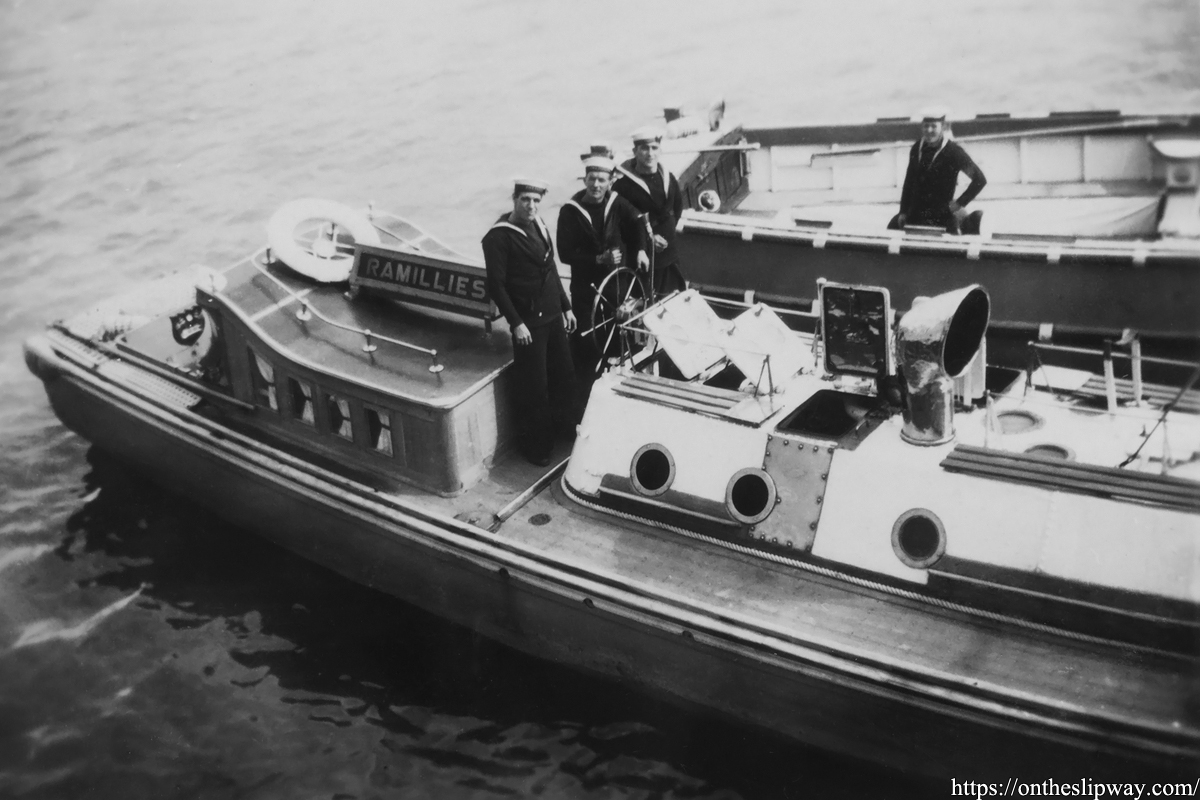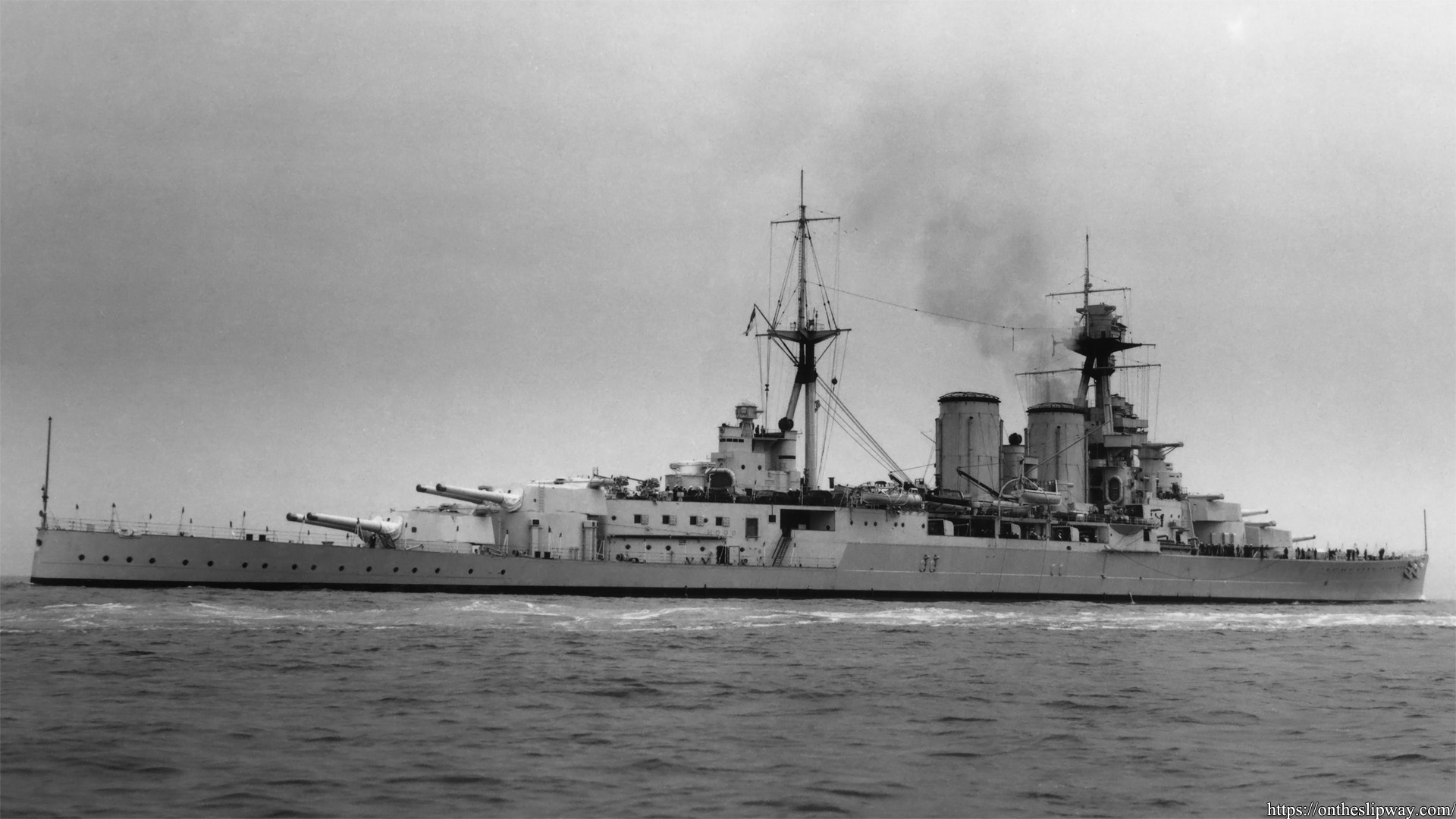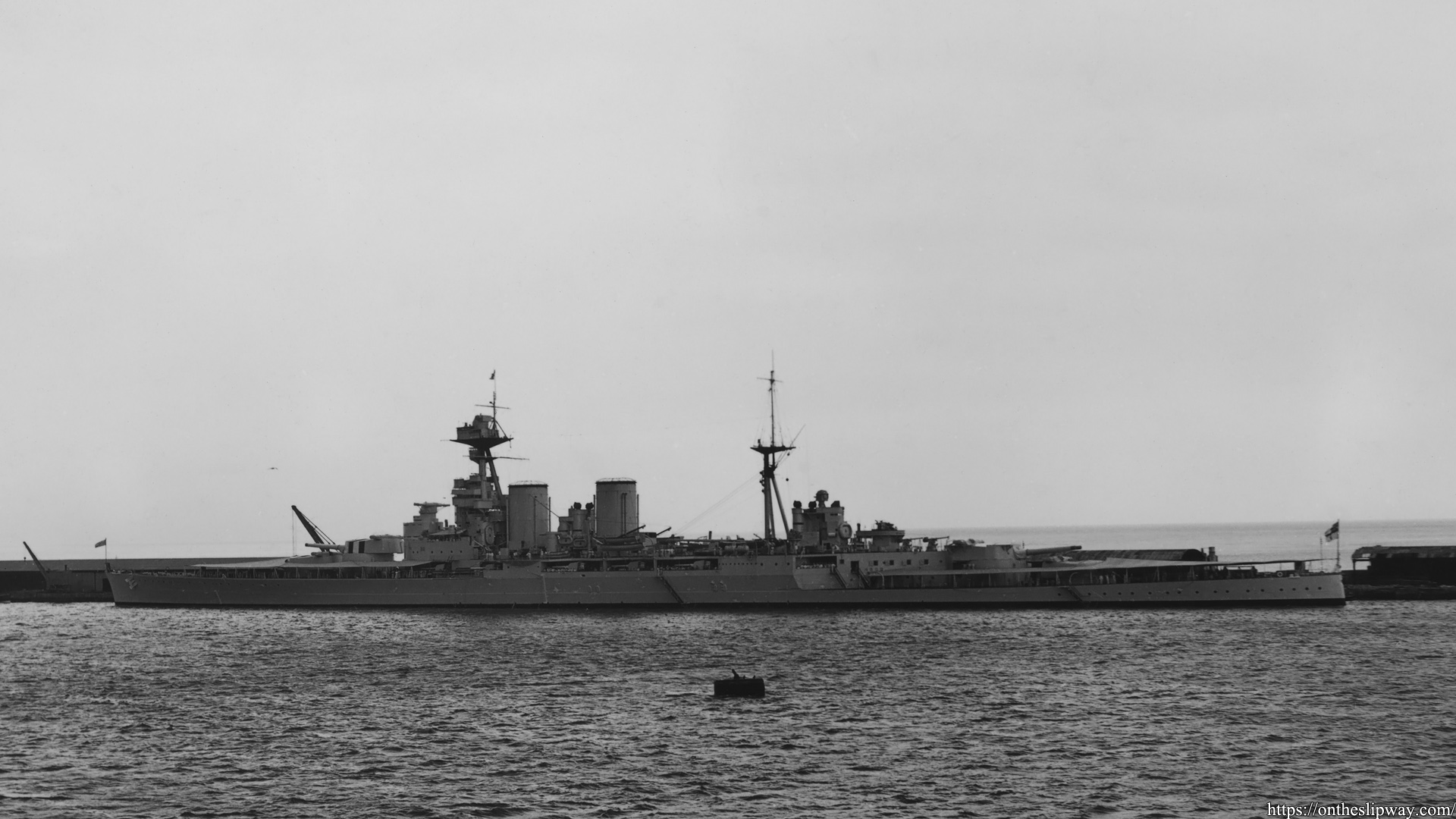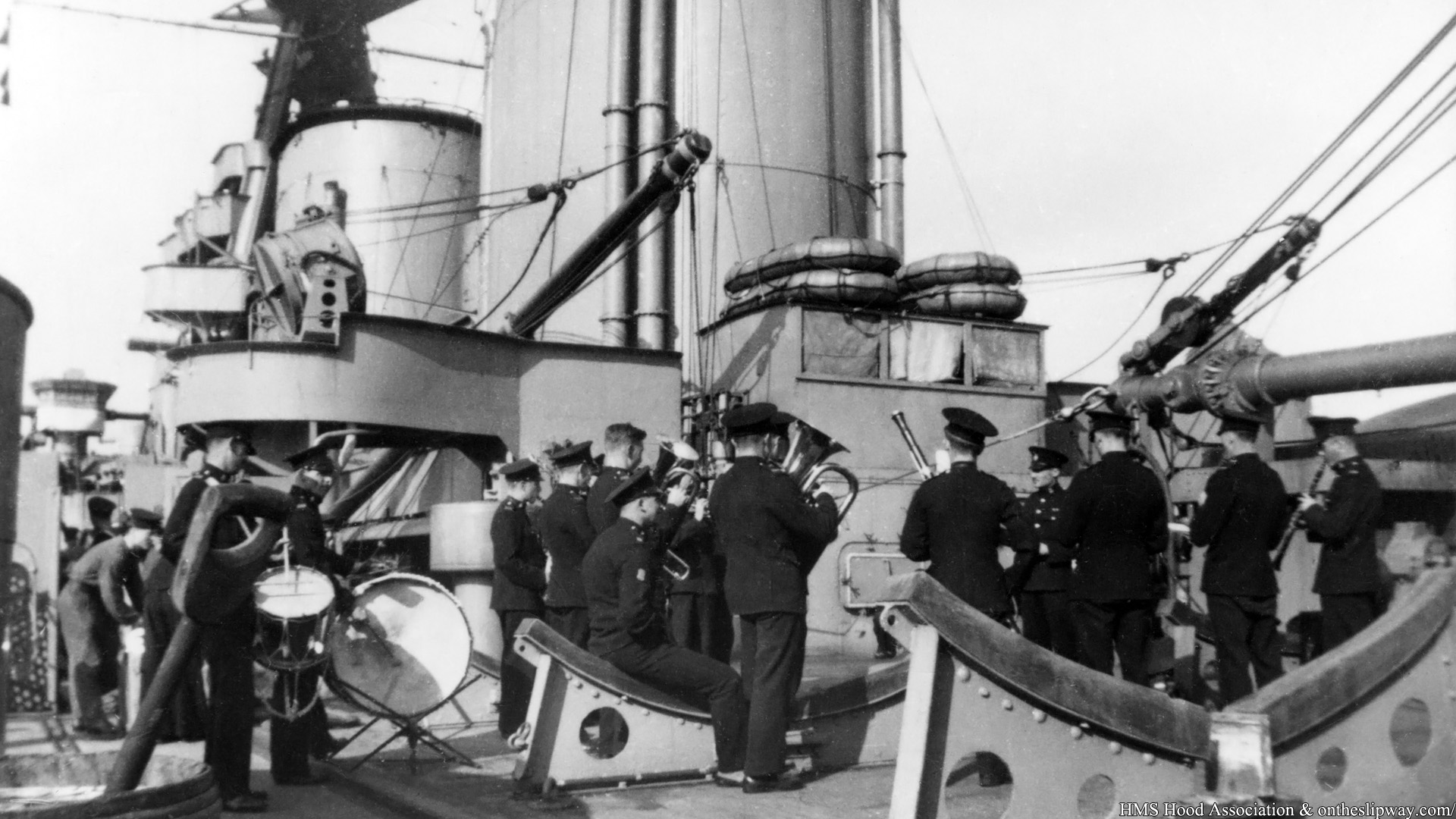I had only two regrets of building HMS Hood in her April/May 1941 configuration; a bit too early for her to have one of the Admiralty first disruptive camouflage schemes and a bit too late to have a steam pinnace aboard, in my opinion the most handsome type of the ship’s boats. As described in Boats & Launches of HMS Hood, 1941, the last picket boat was not landed but still aboard when Hood was lost. I might have let useful research material slip believing it less to be relevant; I even forgot I already bought Stapleton’s book and now have two copies… (in my defence, my first copy slid behind a bookshelf out of sight).
“The term steam launch is not included. Naval Officers and ratings referred to each type of team boat, or craft, by its correct description and never used, even affectionately, the general term picket boat for every steam craft. Picket boats were either 56 feet or 50 feet in length whilst the 45 foot steam pinnaces during their existence were always referred to as pinnaces”
Stapleton, 1980
While Stapleton is quite clear in the term picket, official drawings and documents refer to a 50ft Steam Pinnace; all steam pickets are pinnaces but not all pinnaces are pickets.
Fortunately, there is a good copy of a plan of the picket in the book on Norman Ough here loaded as a background to Rhino with various notes and lines to make the model. While going over the drawing and photographs I started to notice minor differences between the various pickets.
The cover over the engine room is either a low version with small ‘plateau’ below the funnel, or, a higher flat-roofed version If you look closely to the top-left image you’ll notice that Hood appears to carry one version of each. The top-right image clearly shows the ‘stepped’ cover, while the bottom images clearly show the flat-roofed version that remained present until 1941. The layout for hatches and cowlings and so on of the Ough drawing cannot be used, including the coaling chutes on deck as Hood’s pinnaces were oil-fired.
The cabin of Steam Pinnace 199 does not show characteristic S-shape; this cabin was taken from pinnace 224 from HMS Inflexible that carried 2 50ft pickets. Images of Inflexible do not show the typical 50ft pickets (with one craft not a 50ft picket at all); while her sister ship New Zealand (bottom right) does. The cabin of pinnace 199 is filed under “mysterious” and will be ignored.
Meanwhile, variations of the default cabin are found as well with HMS Rodney’s picket (top left) showing a rectangular seating area aft while nearly all other pickets show this area following the lines tapering aft (as does Hood’s picket).
A small hull was vacuum formed from flimsy 0.25mm plate using a small plug made from Evergreen strip based on the lines from Ough. The hull was not immediately cut to size but first fitted with a few ‘bulkheads’ and filled with magic sculpt. Two layers followed, the last one the individual planks as laid on pinnace 199 with a small centreline king plank and the rest of the planks following the margin plank (except at the bow where the planks are cut off). No nibbing is visible at either the margin or king plank. The strips were made from Wave 0.2mm styrene cut to 0.25mm strips. It would be really useful if you could just buy strips and rods at smaller dimensions as I need these so often. The trick is to glue the strips almost together without fusing the gap between them.
The stem strip running over the bow was first bent, taped on a small plate and boiled a bit to maintain the curve; the keel is a separate strip sanded to size. A small stern tube was added from from Albion Alloy’s 0.4mm tube; I let it run into the cabin to help alignment. The wooden grating on the aft deck is the finest mesh I could find but this mesh not fine enough and does not match the lattice outline well. On the foredeck three tubes were added for the flag post, a pipe to the chain locker and a small vent. I was worried a bit about making this complex shape. I started with a 1.0mm tube, added a 0.7mm hole/tube and soldered them together. After filing them to size with a bit of magic sculpt to round off the top the part turned out really well.
The bow received a bit more detail above the rubbing strake (or rubber) near the stem against the wash strake; this small area was often left unpainted and polished. The fairleads were another experiment using a small 0.2mm milling bit; I started by milling a small ‘T’ in a wide strip and then milled away the sides. Each fairlead has a small asymmetry that is larger than the slack in the milling machine, but it’s so small I don’t mind. The milling was easy, I had to spend more time cleaning the part and scraping away excess styrene. The cleats are leftover PE from Hood herself for details scattered around the deck edge. A small strip is present on Pinnace 199 at the waterline; not sure if Hood’s pinnace had one but Renown’s picket did and it should come in as a very handy guide when masking the hull. A bit rope was added—made from a pair 0.15 mm brass wires twisted using the drill—running over a small bump on the post side hull, I assume some cooling water discharge.
The layout of the cover over the engine room seems to be different for each picket. Ramillies’ picket (top left) has two hatches aft, opening forward. (A) Two air intakes are grouped around two hatches opening inboard (B) three scuttles are fitted in the roof between the intakes and the funnel (D). Royal Sovereign’s picket (top right) shows only two scuttles in the roof and has an additional hatch just behind the funnel (C). An unidentified picket (bottom left) also shows three scuttles in the roof and a small hatch behind the funnel; pinnace 199 (bottom right) has only two scuttles in the roof and no hatch behind the funnel.
These are all pickets of Hood. A previous image showed that Hood’s pickets had a stepped and a flat-roofed cover (shown here); but on closer inspection of the top image (beneath the inserts) it seems that Hood started carrying two flat-roofed pickets (A). A few decent shots were found of the port side picket; this is picket #2 as indicated by the two brass rings around the funnel (B). This picket has the forward vent on the same side as the aft vent (C); an earlier shot (bottom left) shows the vents in other positions (plus other arrangement of steam pipes around the funnel), so definitely not the same picket #2. I noticed that the scuttles in the side of the engine room cover is not the same for the small insert and bottom right image (E) suggesting these are not the same picket either, but both have the vents on port side. So, both pickets were replaced or modified? The hatches in the roof open forward on all versions (F), in contrast to the pickets in the previous image. The bottom right also shows a pair of scuttles in the roof. I will use this layout for my model and not the one shown bottom left (edit: this image shows the same pinnace from another direction).

I found a good image on the website on the National Maritime Museum matching Hood’s picket better than the other drawings; slightly pixelated but useful enough to drawing the cover for the engine room and the base for the 3in Hotchkiss gun. Various etched parts are already drawn in. The steering wheel is connected to the rudder till via a wire runs around the outside of the hull over a number of pulleys (top view: small circles at the stern and either side of the steering position). Two small pulleys are mounted at the base of the steering assembly as well as visible-ish in the drawing; I only found a good view of that position of in a clip showing Pinnace 199 being disassembled for an overhaul (here at 4:14)
The Hotchkiss 3-pdr base and engine room cover were made from styrene sheet and then filled with Magic Sculpt. This was really tricky because of the small size of the parts glued to the model and I needed four sessions to apply these otherwise simple shapes. The arrows indicate the location of four pulleys for the steering arrangement. Top right shows the cabin under construction made from strips. The inner benches were added first as a convenient spacer at the end of the cabin. I tried spotting a door on photographs bit didn’t manage to find one, except on pinnace 199 where the doors open inwards. However, this is not possible with the S-shaped cabin shape here so I decided to keep the cabin open. The end of the cabin is again strip and both the front and aft section have a slight arc to capture the curvature of the roof. I used many ‘spacing strips’ to find the width and depth of the cabin to make all the parts fit.
The roof has both the S-shape and a slightly curve, so I used a cheap vacuum former shown top left; simply add boiling water. A few spacer strips were added to the inside to ‘lock’ the roof into position—need to paint inside before I’ll glue the roof—and the plate could then be cut to size. Below is the model with all parts in place with ready to receive the etched parts. Two more vent cowlings were made using the same recipe as the one on the foredeck; I really like my small milling machine! The funnel was a very tricky part with the trumpet made by squeezing one end onto a dead centre on the lathe; I actually tried using a butane burner to heat the tube end, but that didn’t help one bit. In the end it was just repetition until the trumpet didn’t show any tears. The base is a bit of styrene trimmed to size on the lathe and filled with Magic Sculpt; the top ring is a bit of stretched sprue.
I finished a small etch set with a denser lattice and the parts for the picket bottom right. A few other parts were added as well, mainly more Denton floats (far right), missing admiralty ladders top, and re-etched stairs from the aft superstructure down going down as the previous versions didn’t fit.
The artwork was sent to etchworks.eu and arrived three weeks later. This is only half the etch as a copy was added on the opposite side of the A5 sheet; I always add a few experiments and parts that are a bit finer than recommended by the etcher; some thin lines are over-etched and some grids and holes a bit under etched but generally a scan of set looks great.
All etched parts in place; most of it went fine except for the steering pulleys near the steering wheel that were too small; I gave up and added a tube. The grid on the stern was replaced by the newly etched mesh, a decision that came with some regret as I first had to repair the damage from removing the previous mesh. For the two small small ‘steps’ in the aft seating area I found out I did not have any folding lines on the rear of the etch (put some parts in the wrong layer when creating the PDF for the etcher); except for these only two other parts are affected, fortunately. The handrails are drilled in a bit to make sure they don’t fall off at the slightest touch (now they fall off at the merest touch).
The crutches follow the hull lines of the barge, but their spacing follows the 4ft frame spacing of the boat deck; the crutches are spaced at 3 frames, except for the last crutch at 2 frames, positioned just below the stern tube. I started with the 2nd crutch working in either direction, choosing the keel to run level so that the propeller doesn’t foul the deck. Each crutch starts as a strip made to fit the pinnace; weight-saving holes are then drilled in and the strip is trimmed to size. The real boat rested on a teak planks but rather than putting a strip between the hull and the crutch, there are a few strips on either side of the crutch so that the crutch doesn’t need to follow the hull lines perfectly. There’s a bit of damage near the bow as I put the forward crutch initially at 2 frames; I also had to make 4 versions of the rear crutch before it looked fine; only one very tricky part and 13 strips to redo. Propulsion arrangement was last with the rudder being particularly tricky and very fragile.


